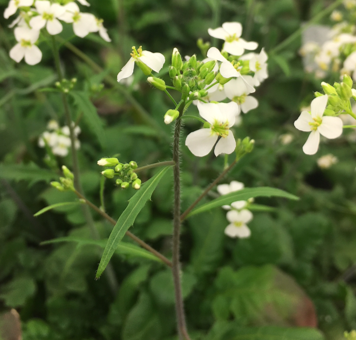How the same plant species can programme itself to flower at different times in different climates

Researchers led by Professor Caroline Dean have uncovered the genetic basis for variations in the vernalization response shown by plants growing in very different climates, linking epigenetic mechanisms with evolutionary change.
Vernalization is a period of prolonged cold that some plants require before they will flower.
This ensures that they only produce flowers after the damaging cold of winter has passed. The plant must have a way of ‘remembering’ how much cold weather it has endured and in 2011 the researchers uncovered the mechanism plants use.
When sufficient time in the cold has passed, an epigenetic switch silences a flowering-repressor gene called FLC. These epigenetic changes are then passed on to daughter cells during the rest of the plants developmental cycle.
Different plants have different vernalization requirements, as the length of winter cold they experience varies with geography and climate.
In new research published in the journal Science, Professor Dean’s team have worked out how different plants set the level at which this epigenetic switch is triggered.
They looked at a variety of Arabidopsis thaliana derived from North Sweden (Lov-1), and compared it to the reference ‘Columbia’ variety. Columbia needs four weeks of cold to trigger the epigenetic switch. The Lov-1 variety needs 9 weeks of cold to achieve the same, a natural variation to cope with the longer winters at northern latitudes.
They found variation in the genome sequence in and around the FLC gene itself. A combination of four genetic differences (polymorphisms) between the two varieties is responsible for the requirement for a longer period of cold.
The polymorphisms affect chemical modifications to histone proteins which DNA is wrapped around. These modifications affect gene expression and are behind epigenetic memory. The four polymorphisms affect these modifications across the FLC gene so this points to how they are able to determine the switching point for the silencing of the gene.
More research is needed to determine exactly how these polymorphisms contribute to epigenetic memory, as the mechanism itself is still not fully understood. This plant model system is ideal for unpicking the intricacies of these mechanisms and how they apply across different organisms.
This research provides an explanation for how the level at which an epigenetic state switches itself is determined in response to a quantitative stimulus. This may be a general mechanism by which many other organisms adapt to changing environments.
Arabidopsis has a wide geographical distribution, and adapting its vernalisation requirement in this way may have been key to helping it grow in different climates.
As our own climate changes, we may be able to learn from the way Arabidopsis has adapted to help produce new crop varieties.
This research was supported by a Marie Curie Intra-European Fellowship within the 7th European Community Framework Programme, the Biotechnology and Biological Sciences Research Council (BBSRC) and a European Research Council Advanced Investigator grant



